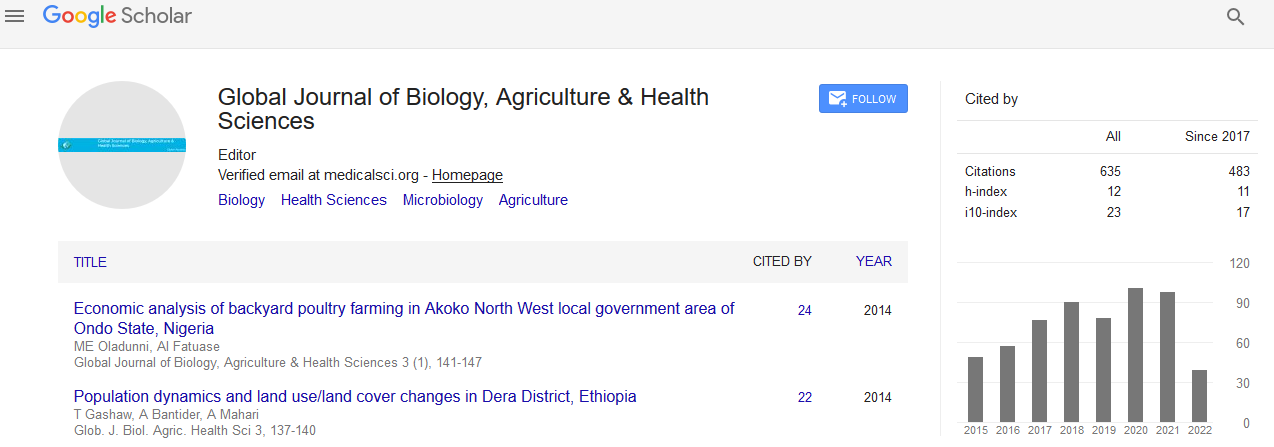Indexed In
- Euro Pub
- Google Scholar
Useful Links
Share This Page
Journal Flyer

Open Access Journals
- Agri and Aquaculture
- Biochemistry
- Bioinformatics & Systems Biology
- Business & Management
- Chemistry
- Clinical Sciences
- Engineering
- Food & Nutrition
- General Science
- Genetics & Molecular Biology
- Immunology & Microbiology
- Medical Sciences
- Neuroscience & Psychology
- Nursing & Health Care
- Pharmaceutical Sciences
Abstract
Chronic Fluoride Exposure and its Diverse Adverse Health Effects in Bovine Calves in India: An Epitomised Review
Over exposure of fluoride (F) triggers the genesis of several adverse health effects in vertebrates including man and domestic and wild animals in the form of fluorosis. In the rural India, the maximum populations of domestic animals are bovines (cattle and buffaloes). These animals are basic economic sources for villagers and strengthen the rural economy. Though, multiple sources of F exposures are available. However, F containing water and industrial F emissions are the major sources of F exposure for bovine animals. In rural areas, almost all the drinking groundwater sources are fluoridated and contained F beyond the threshold value of 1.0 or 1.5 mg/L. Drinking of such water for long-term is injurious to animal health. Many industrial processes in rural areas are releasing F in their surrounding environment and contaminate the agriculture soil and freshwater reservoirs. These sources of F exposure are potential to develop diverse toxic effects in bovines and their foetus and calves. Most of the epidemiological studies in India on chronic F intoxication have been conducted in adult bovines, cattle (Bos taurus) and buffaloes (Bubalus bubalis). However, few investigations have also been performed on chronic F intoxication in bovine calves. Nevertheless, toxicological point of view, findings of these studies are significant and unique. Bovine calves are relatively more susceptible to F toxicosis as compared to their counter parts. Various F induced toxic health effects including lameness have been observed in calves aged of 2 months at < 1.0 ppm F in drinking water. In the review, findings on F toxicity in calves are critically reviewed and also identified gaps of future research. The review acknowledges the diverse potential sources of F exposures, susceptibility to F in calves, various F induced toxic health effects, determinates affecting the magnitude of F toxicosis, calves as bio-indicators for chronic F intoxication and prevention and control of fluorosis in calves. Significance of these findings may contribute in preparation of comprehensive healthiness plan for mitigation of F intoxication in bovine animals.
Published Date: 2021-05-15; Received Date: 2021-03-15

